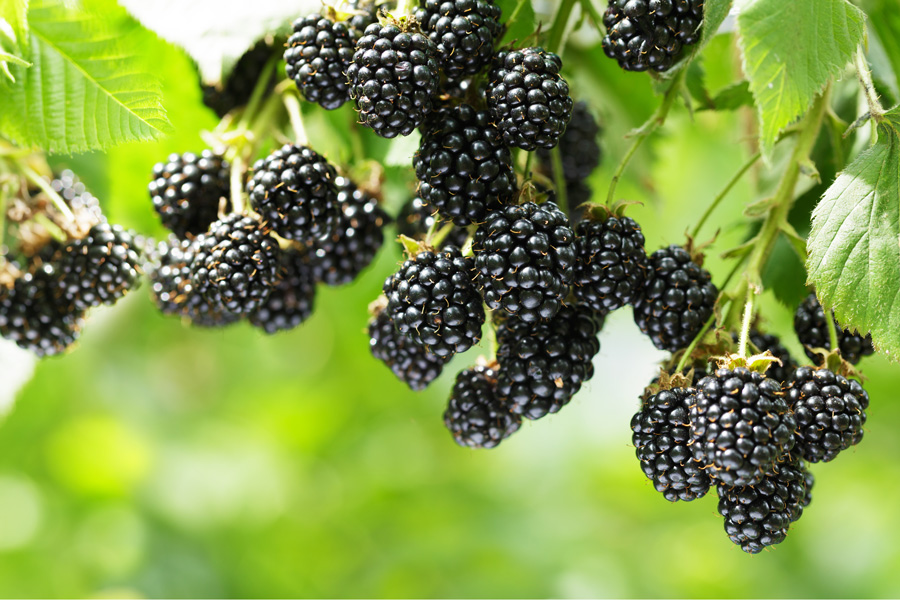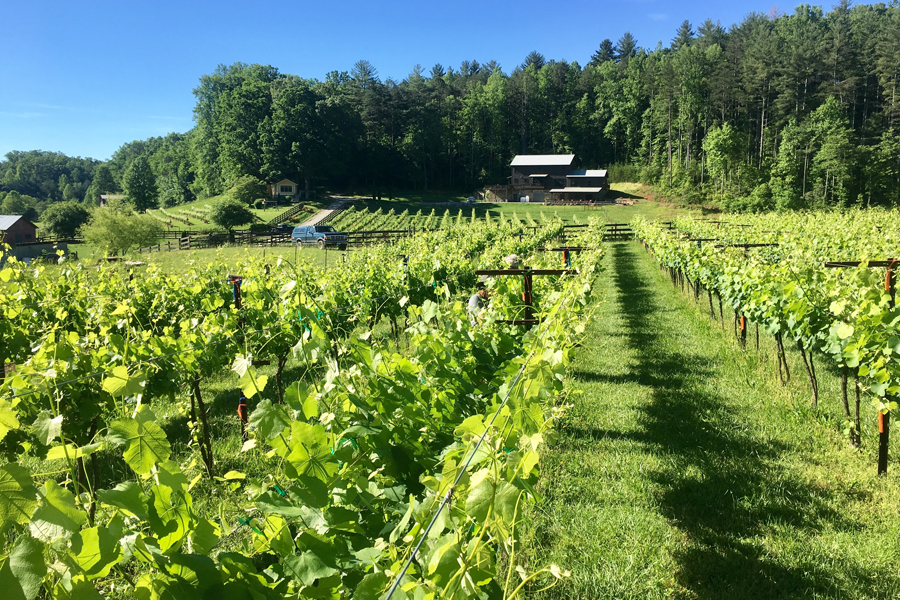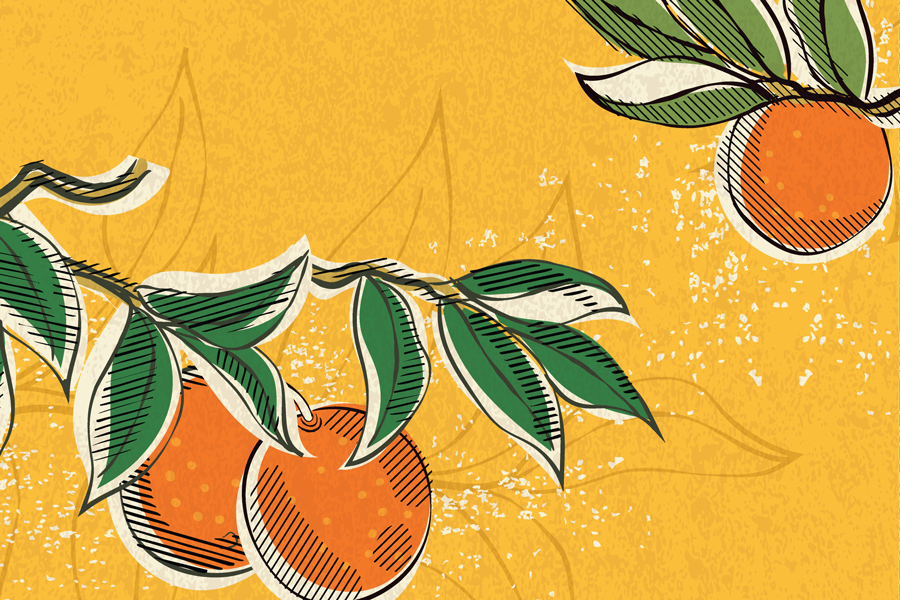Commercial Fruit
-

AP 130-1-04
2023 Fruits and Tree Nuts Outlook
1. The three major U.S. peach-producing states experienced a significant fall in production which cumulatively reduced our 2022 production by 15%. Since it is difficult to predict whether the weather and water shortage that contributed to the decrease in production will persist, chances are that the situation may improve in 2023, but not by much. 2. The significantly high price received by peach and orange producers was instrumental in maintaining a strong consumer price index in 2022. The producer price index is expected to stay strong in 2023. 3. In 2023, blueberry imports from Chile, Peru, and Mexico will continue to increase—domestic harvests only get into the market beginning mid-March, and total production is not enough to satisfy high domestic demand. 4. Georgia pecans will continue to dominate the tree-nut industry in the 2023 crop year and prices are expected to improve, especially if China increases it imports of U.S. pecans.
Esendugue Greg Fonsah and Amanda R Smith
|
-

This circular covers basic postharvest harvesting, handling and cold storage principles for fresh-market blackberries to ensure the highest possible shelf-life and quality while minimizing postharvest losses. Blackberries are harvested in Georgia from mid-May to August. Most varieties
grown in Georgia were developed by the University of Arkansas breeding program.
The blackberry varieties cultivated in Georgia are primarily intended for fresh market
sales and are harvested by hand, while machine harvesting can be used for
fruit that will be frozen.
Blackberries are a highly perishable fruit; since they lack both cuticles (protective
outer coverings) and carbohydrate resources, they have high respiration and
transpiration rates. Because of the fruits’ delicate skin, they cannot be cleaned
or cooled using water. The shelf life of blackberries is limited by high rates of
respiration, water loss, softening of the fruit, decay, and mechanical damage. To
slow down deterioration in quality, it is imperative to reduce the temperature of the
fruit as soon as possible after harvest.Angelos Deltsidis and Zilfina Rubio Ames
|
-

Note: This publication contains data from an average of the 2020-21 and 2021-22 orange harvest seasons (exceptions noted in the chart). The commercial citrus industry in Georgia has only recently been established, with most groves planted after 2014. As of 2022, approximately 75% of the 3,300 acres of citrus planted in Georgia are satsumas, but that proportion is trending downward. To strengthen the new Georgia citrus industry, growers recently have begun to diversify their citrus varieties. Research is being conducted to determine how these varieties will perform under Georgia weather and soil conditions: which varieties can best tolerate Georgia’s winter weather, and what are the cultural norms such as maturation time, fruit quality, and insect and disease tolerance. This publication is associated with Circular 1275, the initial publication containing reference photos for the varieties tested.
Jake Price
|
-

There are two main trellising system categories: divided and single canopy. Jerry Watson, a grape grower and owner of Austin County Vineyards in Cat Spring, Texas, developed the divided canopy “Watson System” in 2002 to solve some issues he was having with bunch rot management and harvest inefficiency in his ‘Blanc Du Bois’ and ‘Lenoir’ vineyards. By adding a series of cross arms and catch wires to his high wire system, Jerry was able to improve spray penetration to the fruit zone and increase picking efficiency at harvest. The Watson hardware and wires separate clusters from the canopy foliage and limit cluster touching compared to a standard, single high wire system. The Watson system has since been employed in the Southeastern U.S. and can be found as far west as California. The Watson system is currently used for training hybrid and trailing grape cultivars such as, but not limited to, ‘Blanc du Bois’, ‘Norton’, ‘Lenoir’, ‘Lomanto’, ‘Crimson Cabernet’, and ‘Villard blanc’. A high wire-trained vineyard, such as those planted with ‘Chambourcin’, ‘Seyval blanc’, ‘Vidal blanc’, ‘Traminette’, and other cultivars could be retrofitted to Watson training with success. Future research will evaluate hybrid and Vitis vinifera cultivars that have yet to be evaluated for training on the Watson system.
Paula Burke, Rachel Itle, Jason Lessl, and Sarah Lowder
|
-

This is a new annual guide for managing diseases, insects, weeds, and wildlife in bunch grapes in the Southeast. This regional integrated pest management guide provides recommendations based on information from the manufacturer’s label and performance data from research and Extension field tests. This publication is intended for use only as a guide. Specific rates and application methods are on the pesticide label, and these are subject to change at any time.
Phillip M. Brannen
|
-

The Athena bunch wine grape training system was developed by the University of Georgia to increase crop yield in modest-yielding cultivars. The Athena is a divided-canopy system retrofit to the industry standard single-canopy trellising system with vertical shoot positioning. Athena training involves laying four canes and dividing the canopy through a series of cross arms fastened to the vineyard posts in a V-shape. The goal of this publication is to educate new growers, seasoned industry members, and Extension agents on the Athena training system for bunch wine grapes.
Nathan Eason, Clark MacAllister, John Joseph Scaduto, and Sarah Lowder
|
-

The commercial citrus industry in Georgia has only recently been established, with most groves planted after 2014. Initially, satsuma mandarins (Citrus unshiu) on trifoliate rootstocks (Poncirus trifoliata) were planted for their cold-hardiness, seedlessness, and ease of peeling. Satsuma fruits begin to attain commercial maturity in early November and usually avoid hard freezes in southern Georgia. As of 2022, approximately 75% of the 3,300 acres of citrus planted in Georgia are satsumas, but that proportion is trending downward. To strengthen the new Georgia citrus industry, growers recently have begun to diversify their citrus varieties. Little is known about how these varieties will perform under Georgia weather and soil conditions. Therefore, research is necessary to determine what varieties can best tolerate Georgia’s winter weather and to determine cultural norms such as maturation time, fruit quality, and insect and disease tolerance. This publication is associated with Circular 1275, the initial publication containing reference photos for the varieties tested.
Jake Price
|
-

This resource is for commercial blueberry growers and covers basic postharvest harvesting, handling and cold storage principles for fresh-market blueberries to ensure the highest possible shelf life and quality while minimizing postharvest losses.
Angelos Deltsidis and Zilfina Rubio Ames
|
-

Freeze protection efforts should be based on the type of freeze, temperature, and wind speed that is impacting your crop. To apply frost protection, consider your crop value, the freeze protection capacity of your system, and the crop’s susceptibility to injury at each growth stage.
Erick Smith, Timothy Coolong, and Pam Knox
|